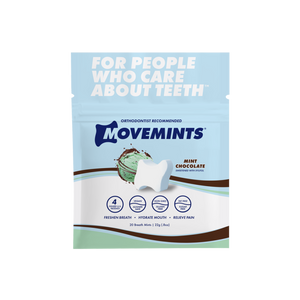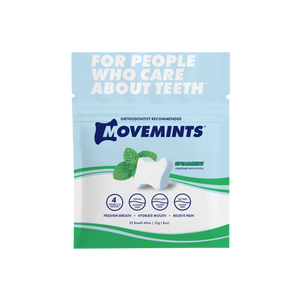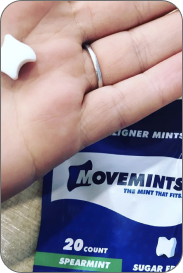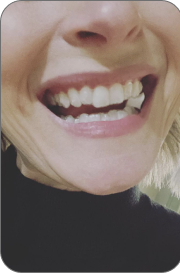Invisalign has revolutionized orthodontic treatment, providing an effective and discreet way to straighten teeth.
One of the key components that sets Invisalign apart from traditional braces are attachments - the small, tooth-colored bumps that are bonded to select teeth during treatment.
Invisalign attachments provide extra points of contact between your teeth and the smooth plastic of the Invisalign trays.
Learn more about the four main types of Invisalign attachments and how they work to move your teeth into their ideal position.
The Four Main Types of Invisalign Attachments

Several types of Invisalign attachments may be used during your treatment, depending on your specific orthodontic needs.
The four most common types of attachments are:
1. Precision Cuts for Elastics
These small, rectangular attachments have slits for elastic bands, which provide extra force to properly align teeth. This extra force improves the effectiveness of the treatment process by providing more control over tooth movement and ensures that the teeth are properly aligned.
These attachments also minimize discomfort or irritation from elastics rubbing against gums by holding them securely, preventing shifting or twisting, and reducing potential side effects.
2. Precision Wings for Mandibular Advancement
Wing-shaped attachments correct underbites by providing leverage for aligners to move the lower jaw forward, aligning teeth and improving the bite. Strategically placed on Invisalign aligners, they exert pressure on specific teeth and jaw, encouraging the mandible to move into the desired position.
3. Optimized Anchorage Attachments
Square or rectangular attachments are small, tooth-colored shapes that are placed near the molars, acting as anchors to provide added control and prevent tooth rotation. This keeps anchor teeth stable as force is applied to shift and rotate other teeth, allowing for a more predictable and accurate tooth alignment.
4. Optimized Retention Attachments
Small, oval, or circular attachments are placed near the front teeth for extra retention, offering support and stability. They enhance aligner grip on teeth, securing them in their new positions post-treatment.
Retention attachments are vital post-treatment to prevent teeth shifting, maintaining long-term corrected positions and desired final results.
Benefits of Using Invisalign Attachments
There are many benefits to using Invisalign attachments during clear aligner treatment:
-
Improved control over tooth movements
-
Ability to correct more complex orthodontic issues
-
Shortened treatment times
-
Enhanced aligner grip for moving difficult teeth
-
Better outcomes and success rates
-
More precise rotational control
-
Customized treatment plans
Movemints: Your Go-To for Invisalign Accessories

We offer a variety of helpful Invisalign accessories to pair with attachments placed by your orthodontist and improve your overall experience. This includes aligner removal tools, cleaning sprays, carrying cases, and more.
Our sugar-free aligner mints feature patented grooves that securely hold aligners in place for a better fit while keeping your breath fresh.
You can even build a customized Movemints bundle to meet your unique needs.
Choose a variety of flavors, select accessories, and save 15% while you're undergoing your Invisalign treatment!
Invisalign Attachments FAQ
Are Invisalign attachments necessary?
Invisalign attachments are often essential for successful treatment, providing the extra grip for effective tooth movements with Invisalign's smooth, removable aligner trays. However, the need for attachments varies, with the orthodontist determining their necessity based on individual cases.
How long do you have to wear Invisalign attachments?
You will need to wear your Invisalign attachments for the duration of your prescribed treatment until your orthodontist informs you that you are ready to have them removed. Typically, attachments stay on for several months to over a year, depending on your treatment plan. Once your teeth have reached their final corrected positions, the attachments can be taken off.
Do Invisalign attachments hurt?
Getting Invisalign attachments bonded to your teeth does not typically hurt. Your orthodontist will thoroughly clean and dry your teeth before applying a conditioning liquid. Then the attachments are effectively bonded directly onto the enamel using a curing light. You may feel some pressure or minor discomfort during the bonding process, but it is not painful. Once they are on, Invisalign attachments generally do not cause any pain. You may notice them slightly for the first day or two as you adjust to having the bumps on your teeth. But soon, they become unnoticeable and should not be painful. Maintaining good oral hygiene and using orthodontic wax can help relieve any mild irritation.

















